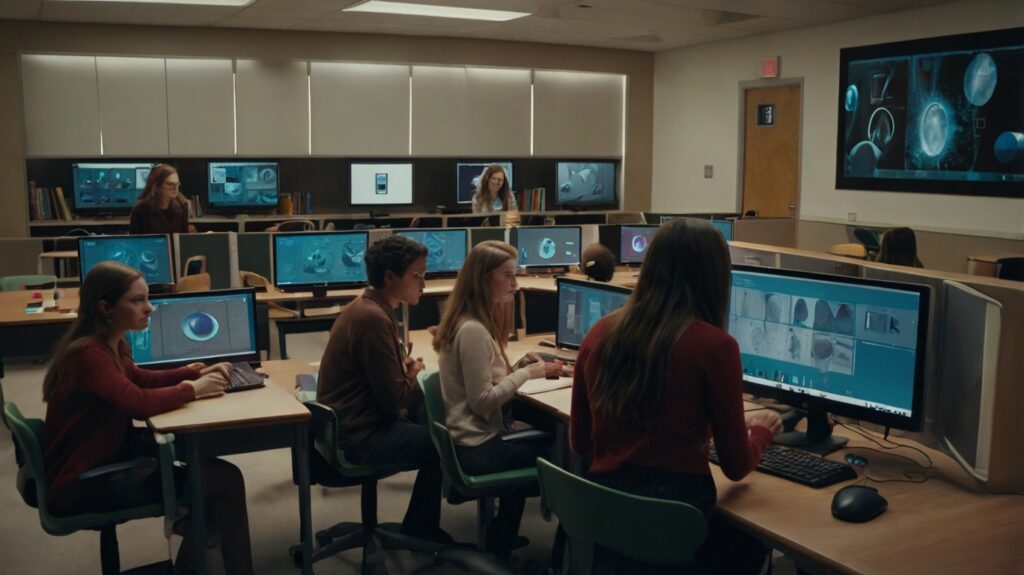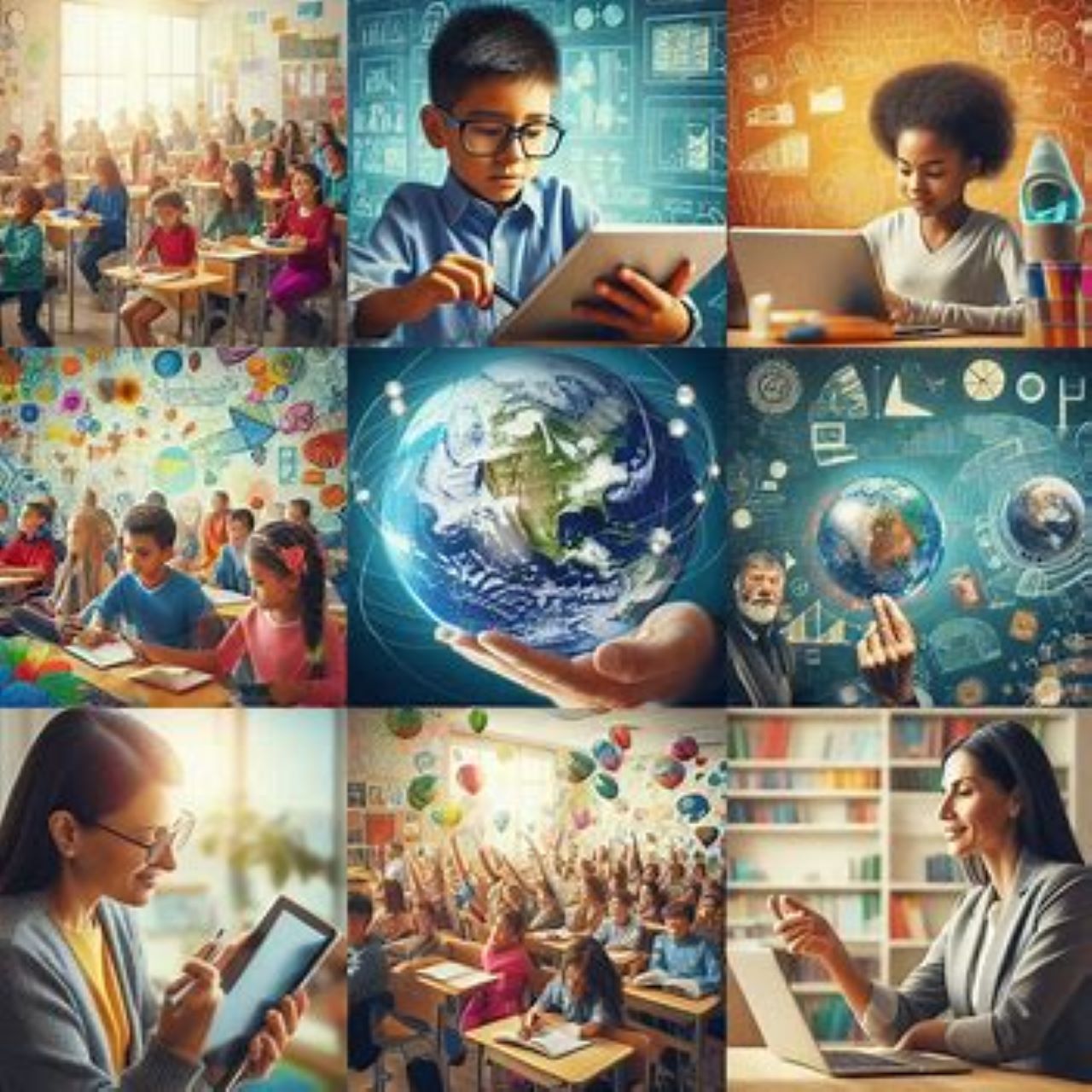
In the ever-evolving landscape of education, staying updated with the latest trends and innovations is crucial for school principals and educators. This comprehensive article explores cutting-edge teaching techniques and technology-based innovations from K–12 to higher education, with a focus on enhancing student engagement, personalized learning, critical thinking, and professional readiness. The article will include the latest statistical data and trends to provide a highly demanding and valuable reading experience.
Introduction
In today’s dynamic educational environment, the need for continuous innovation and adaptation has never been more critical. Educational leaders and teachers must stay informed about the latest developments to provide high-quality education that prepares students for the future. This article delves into various innovative teaching techniques and technology-driven solutions that can transform education from K-12 through higher education. We will explore blended learning, gamification, augmented reality, personalized learning approaches, and much more. Each section includes the latest data and real-world examples to illustrate the profound impact these innovations can have on student engagement and learning outcomes.
Embracing Technology in Classrooms
Blended Learning

Explanation and Benefits
Blended learning is an educational approach that combines traditional face-to-face classroom methods with online digital media. This method allows students to learn at their own pace while still benefiting from direct interaction with teachers and peers. Blended learning caters to various learning styles and provides flexibility in accessing educational materials.
Latest Statistics on Adoption and Impact
According to a 2023 report by the Clayton Christensen Institute, over 70% of schools in the United States have adopted some form of blended learning. The report also highlights that schools using blended learning have seen a 15% increase in student performance compared to traditional teaching methods.
Real-World Examples and Case Studies
One notable example is the School of One program in New York City, which uses blended learning to tailor instruction to individual student needs. The program has successfully improved math proficiency rates, with participating students achieving significantly higher scores on standardized tests compared to their peers in traditional classrooms.
Gamification

Definition and Benefits for Student Engagement
Gamification involves applying game design elements such as point scoring, leaderboards, and badges to educational activities. This approach aims to increase student motivation and engagement by making learning more interactive and enjoyable.
Success Stories and Data on Improved Learning Outcomes
A study by the University of Colorado found that students participating in gamified learning activities performed 14% better in skill-based assessments and 11% better in knowledge-based assessments. Schools like Quest to Learn in New York City have successfully integrated gamification, resulting in higher student engagement and improved academic performance.
Augmented Reality (AR) and Virtual Reality (VR)
How AR and VR Are Transforming Education
AR and VR technologies offer immersive learning experiences that allow students to interact with 3D models, explore virtual environments, and visualize complex concepts. These tools make learning more engaging and memorable by providing hands-on, experiential learning opportunities.
Data on Usage Trends and Student Performance Improvements
According to a report by Global Market Insights, the educational AR and VR market is expected to grow at a compound annual growth rate (CAGR) of 16% from 2021 to 2027. Schools that have adopted these technologies report higher student engagement and improved understanding of difficult subjects such as science and history.
Personalized Learning
Adaptive Learning Technologies
Explanation and Benefits of Adaptive Learning
Adaptive learning technologies use algorithms and data analytics to customize the learning experience based on individual student performance. These platforms adjust the difficulty and pace of lessons to match each student’s needs, ensuring optimal learning outcomes.
Statistical Data on Effectiveness and Student Performance
A study by McKinsey & Company found that adaptive learning can lead to a 20% improvement in student performance. Platforms like DreamBox and Khan Academy have demonstrated success in personalizing math and reading instruction, resulting in higher student achievement and engagement.
Competency-Based Education (CBE)
Overview of CBE and Its Advantages
Competency-based education (CBE) allows students to progress through their education based on their ability to demonstrate mastery of a subject, rather than time spent in a classroom. This approach focuses on developing specific skills and knowledge, enabling students to learn at their own pace.
Examples of Successful Implementation and Relevant Statistics
Southern New Hampshire University (SNHU) has implemented a CBE model for its online degree programs, allowing students to earn credits based on their demonstrated competencies. SNHU reports higher student satisfaction and success rates with this approach. According to a 2022 survey, 85% of students in CBE programs felt more prepared for their careers compared to those in traditional programs.
Fostering Critical Thinking and Creativity
Project-Based Learning (PBL)
Definition and Benefits of PBL
Project-based learning (PBL) is a teaching method where students learn by actively engaging in real-world and meaningful projects. PBL encourages critical thinking, problem-solving, and collaboration, helping students develop skills that are essential for success in the 21st century.
Data on Student Engagement and Skill Development
Research from the Buck Institute for Education shows that PBL increases student retention of content and improves attitudes towards learning. Students involved in PBL are more likely to develop critical thinking and problem-solving skills, with 92% of educators reporting positive impacts on student engagement.
Case Studies of Successful PBL Projects
High Tech High in San Diego is renowned for its PBL approach, where students work on interdisciplinary projects that address real-world issues. These projects have led to high levels of student engagement and impressive outcomes, including higher graduation rates and college enrollment.
Design Thinking

Explanation of Design Thinking in Education
Design thinking is a problem-solving approach that involves understanding user needs, brainstorming creative solutions, prototyping, and testing. In education, design thinking fosters creativity and innovation, helping students approach problems methodically and develop effective solutions.
Examples and Data on Fostering Creativity and Problem-Solving Skills
Schools like the Nueva School in California have integrated design thinking into their curriculum, resulting in students developing strong creative and analytical skills. According to a Stanford University study, students who engage in design thinking activities show a 25% increase in creative problem-solving abilities.
Promoting Collaboration and Communication
Collaborative Learning Spaces
Importance of Collaborative Spaces in Schools
Collaborative learning spaces are designed to facilitate group work, discussions, and cooperative learning activities. These spaces promote interaction among students and encourage the sharing of ideas and resources.
Statistics on Student Outcomes and Engagement
A report by the University of Melbourne found that students in collaborative learning environments are 30% more likely to participate in class discussions and show a 20% improvement in overall academic performance. These spaces also foster a sense of community and teamwork among students.
Digital Collaboration Tools
Overview of Digital Tools and Their Impact on Learning
Digital collaboration tools, such as Google Classroom, Microsoft Teams, and Slack, enable students and teachers to communicate, collaborate, and share resources seamlessly. These tools enhance the learning experience by providing a platform for real-time interaction and feedback.
Data on Usage and Benefits in Enhancing Communication
According to a survey by EdTech Magazine, 85% of educators reported increased student collaboration and engagement when using digital tools. These platforms also improve the efficiency of assignment submission, grading, and feedback, leading to better learning outcomes.
Enhancing Teacher Professional Development
Continuous Professional Development (CPD)
Importance of Ongoing Professional Development
Continuous professional development (CPD) ensures that teachers stay updated with the latest educational trends, technologies, and teaching strategies. CPD opportunities, such as workshops, seminars, and online courses, help teachers enhance their skills and improve their teaching practices.
Data on Teacher Performance and Student Outcomes
Research from the Learning Policy Institute shows that teachers who engage in CPD are more effective in the classroom, with their students showing a 10-15% improvement in academic performance. Schools that invest in CPD report higher teacher satisfaction and retention rates.
Peer Learning Communities
Benefits of Peer Learning for Educators
Peer learning communities provide a platform for teachers to collaborate, share best practices, and support each other’s professional growth. These communities foster a culture of continuous learning and improvement among educators.
Examples and Statistics on Improved Teaching Practices
The National Education Association (NEA) reports that teachers involved in peer learning communities are more likely to adopt innovative teaching methods and improve their instructional practices. Schools with strong peer learning networks see higher student achievement and engagement.
Innovations in Undergraduate and Postgraduate Education
Flipped Classroom Model
Explanation and Benefits of the Flipped Classroom Model
The flipped classroom model reverses the traditional learning environment by delivering instructional content online outside of class and using class time for interactive activities. This approach allows for more personalized instruction and deeper exploration of subjects.
Data on Student Engagement and Learning Outcomes
A study by the Flipped Learning Network found that 71% of teachers who flipped their classrooms reported increased student engagement and better understanding of the material. Students in flipped classrooms also show higher performance on assessments and greater satisfaction with their learning experience.
Interdisciplinary Programs
Importance of Interdisciplinary Education
Interdisciplinary programs integrate multiple fields of study, encouraging students to make connections between different disciplines and develop a broader perspective. This approach prepares students for the complex and interconnected challenges of the professional world.
Examples and Data on Career Readiness and Innovation
Institutions like the Massachusetts Institute of Technology (MIT) offer interdisciplinary programs that combine engineering, business, and science. Graduates of these programs are highly sought after by employers, with 90% reporting that interdisciplinary skills are crucial for career success.
Industry Partnerships and Internships
Benefits of Industry Collaborations for Students
Establishing partnerships with industry leaders and providing internship opportunities give students real-world experience and insights into their future careers. These collaborations enhance the relevance of academic programs and prepare students for the workforce.
Statistical Data on Career Outcomes and Student Experiences
According to the National Association of Colleges and Employers (NACE), students who complete internships are 40% more likely to receive job offers upon graduation. Schools that emphasize industry partnerships report higher job placement rates and greater student satisfaction.
Online and Hybrid Learning Options
Overview of Online and Hybrid Learning Trends
Online and hybrid learning options provide flexibility and accessibility for students, allowing them to balance their studies with other commitments. These models combine online coursework with in-person interactions, offering a comprehensive learning experience.
Data on Accessibility and Student Success
A 2022 survey by the Online Learning Consortium found that 85% of students believe online learning provides the flexibility they need, and 70% reported being satisfied with their online education experience. Hybrid learning models have also shown to improve student retention and success rates.
Research and Innovation Labs

Importance of Research Labs in Higher Education
Research and innovation labs provide students with hands-on experience in scientific inquiry, experimentation, and technological development. These labs foster creativity, critical thinking, and problem-solving skills.
Examples and Data on Fostering Innovation and Research Skills
Institutions like Stanford University and the University of California, Berkeley, have established cutting-edge research labs that contribute to significant advancements in various fields. Students involved in research activities report higher levels of academic engagement and are more likely to pursue advanced degrees and careers in research.
Conclusion
In conclusion, the education landscape is continuously evolving, and it is essential for educators and school principals to embrace the latest trends and innovations. By integrating technology, personalized learning approaches, and fostering critical thinking and collaboration, we can enhance student engagement and prepare them for future success. Continuous professional development for teachers and innovative programs in higher education further contribute to this goal. We encourage educators to implement these strategies to create a dynamic and effective learning environment that meets the needs of all students.

